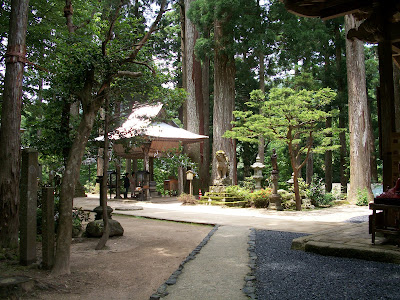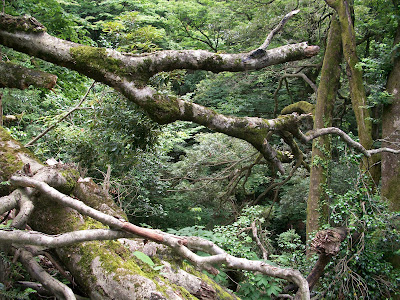I swear, all I do in Japan is tackle kids during 'english' class, and climb rocks.
This past weekend, some friends and I took a trip to Tottori-ken, famous for having the largest of the three major sand dunes in Japan (the rival dunes are in Aomori-ken and... somewhere else). Tottori also grows nashi (pears) fishes a lot of squid. The squid in Tottori is famous for being fatty and scrumptious, not at all like the chewy and tough tentacles you find in other parts of Japan.
In Kurayoshi, a small, silent town off the beaten path and to the southeast of Tottori City, there is yet another unique reason to visit this least populated of all the Japanese prefectures.
I'll be honest. I forgot the name of this place and as I am at the office, and can't read enough Japanese to figure it out with the web, I will probably not be including said vital information in this post. But it's famous in a quiet way. Very few of my Japanese friends knew about this place, and none of them had been here. In fact, while we climbed the 700 meters up (doesn't sound like much, does it? keep reading. you'll see.) we were the only foreigners invading the very thin trickle of Japanese tourists. Once we got gaijin photobombed - when Japanese people pretend to take pictures of their friends, but aim the camera at you, instead- and more than once, tourists cheerfully and blatantly took our pictures. How does that conversation go at home? 'Dude! Saw a whitey today!' 'EEEEEEEHHHHHH? Nani? Gaijin? Hountooooooo?' Probably a lot like that.
 |
| This dude greets hikers/climbers and laughs at their light-headed optimism. |
 |
| This is the 'ground floor' where you enter the temple grounds. You pay a fee to get in here and then after this you pay another fee to go up the mountain. |
 |
| Amazingly tall trees |
 |
| You climb up this almost right away. It's the first staircase you encounter after all those stone steps you schlepped up earlier. |
 |
| There is really only room on the path to go in single file. |
In the above picture, you can kind of see that the people are wearing little white sashes across their shoulders. You may notice there are supposed to be no side bads, and there are supposed to be no long shirts. The path is tricky and you definitely need both hands and both feet free and aware so you can get your monkey on.
 |
| We didn't climb this, it's just interesting. |
 |
| Lots and lots of green! |
This is the beginning of one of the buildings we came across. To get up to this one, we had to hold onto a chain and walk up a rock.. Straight up, almost.
 |
| A view from the corner of that building. |
 |
| It's like throwing coins in a fountain, except you have to be careful that the coins don't fall off and kill someone. |




























